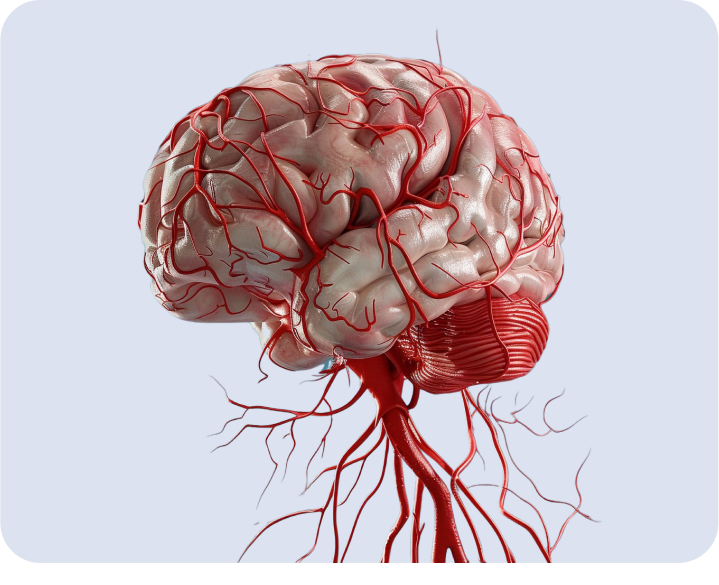Library - Page 8
Registered on ClinicalTrials
The results of a randomized double blind multicenter placebo-controlled in parallel groups of the study and safety of Mexidol with prolonged consistent therapy in patients in the acute and early recovery periods
Registered on ClinicalTrials
L.V. Stakhovskaya 1 , N.A. Shamalov 1 , DR Khasanova 2 , E.V. Melnikova 3 , A.S. Agafin 4 , K.V. Golikov 5 , E.I. Bogdanov 6 , A.A. Yakupova 6 , L.V. Roshkovskaya 7 , L.V. Lukin 8 , T.M. Lokstanova 9 , I.E. Patrunenova 10 , L.A. Shchepankevich 11
1 Research Institute of Cerebrovascular Pathology and Stroke of the Federal State Budgetary Institution “Russian National Research Medical University named after N.I. Pirogov »Ministry of Health of Russia, Moscow, Russia;
2 Igauz "Interregional Clinical and Diagnostic Center", Kazan, Russia;
3 St. Petersburg GBUZ "City Hospital No. 26", St. Petersburg, Russia;
4 St. Petersburg GBUZ "City Hospital No. 40 of the Resort Administrative District", St. Petersburg, Russia;
5 St. Petersburg GBUZ "City multidisciplinary hospital No. 2", St. Petersburg, Russia;
6 FSBEI in Kazan State Medical University of the Ministry of Health of Russia, Kazan, Russia;
7 St. Petersburg GBUZ "Nikolaev Hospital", St. Petersburg, Russia;
8 GBUZ "Vsevolozhsk Clinical Interdistrict Hospital", Leningrad Region, Russia;
9 Mubz "City Clinical Hospital No. 1 named after N.I. Pirogov ", Samara, Russia;
10 GBUZ "Samara Regional Clinical Hospital named after V.D. Seredavina ”, Samara, Russia;
11 FGBNU "Scientific Institute of Experimental and Clinical Medicine", Novosibirsk, Russia.
Place of publication:
a journal of neurology and psychiatry named after S.S. Korsakova, 2017, No. 3, issue 2
Cognitive disorders in patients with arterial hypertension
Authors:
V.V. Zakharov 1 , P.A. Chernousov 1 , K.A. Vakhova 1 , A.N. Bogolepova 2.3
1 FGAOU VO "First Moscow State Medical University named after THEM. Sechenov »Ministry of Health of Russia (Sechenov University), Moscow, Russia;
2 FGAOU in Russian National Research Medical University named after N.I. Pirogov »Ministry of Health of Russia, Moscow, Russia;
3 of the Federal State Budgetary Institution "Federal Center for Brain and Neurotechnology" of the Federal Medical and Biological Agency of Russia, Moscow, Russia
Place of publication:
a journal of neurology and psychiatry named after S.S. Korsakova, 2024, T. 124, No. 4, Issue. 2
Neurometabolic therapy of moderate cognitive disorders in patients with chronic brain ischemia
Authors:
E.A. Antipenko 1 , A.V. Shulyndin 2 , K.M. Belyakov 3
1 FSBEI in “Volga Research Medical University” of the Ministry of Health of Russia, Nizhny Novgorod, Russia;
2 LLC "Vectorfarm", Moscow, Russia;
3 GBUZ but "Nizhny Novgorod Regional Clinical Hospital named after N.A. Semashko ", Nizhny Novgorod, Russia
Treatment of patients with ischemic stroke in the vertebral-baslar system in the acute period: Experience in the use of the neuroprotective drug Mexidol
Authors:
Z.A. Goncharova, I.V. Chernikova, V.A. Nazarova, V.V. Tolmacheva, K.G. Ovsepyan
FSBEI in "Rostov State Medical University" of the Ministry of Health of Russia, Rostov-on-Don, Russia
The use of Mexidol in patients with mild (moderate) cognitive disorders: the results of meta -analysis
Author:
V.V. Zakharov, N.V. Vakhnin
FGAOU VO "First Moscow State Medical University named after THEM. Sechenov "Ministry of Health of Russia (Sechenov University), Moscow, Russia
The effect of therapy with the drug Mexol on the regression of neurological deficiency and a functional outcome in patients with ischemic stroke: a systematic review and meta analysis
Authors:
I.A. Voznyuk 1.2 , S.V. Kolomensev 2.3 , E.M. Morozova 1
Arterial hypertension and cognitive disorders. The gaze of a neurologist
Author:
A.I. Fedin
FGAOU in Russian National Research Medical University named after N.I. Pirogov »Ministry of Health of Russia, Moscow, Russia
Approaches to pharmacotherapy of vascular moderate cognitive disorders in patients of various age groups
Authors:
V.V. Zakharov 1 , A.I. Fedin 2 , E.A. Mkhitaryan 2, 3
Features of pharmacotherapy of vascular cognitive impairment in elderly people
Author:
A.N. Bogolepova 1, 2
1 FGAOU in Russian National Research Medical University named after N.I. Pirogov »Ministry of Health of Russia, Moscow, Russia;
2 FSBI "Federal Center for Brain and Neurotechnology" of the Federal Medical and Biological Agency of Russia, Moscow, Russia
Increasing the efficiency of pharmacotherapy in comorbide patients with chronic brain ischemia on an outpatient basis
Authors:
T.L. Visil 1 , E.G. Arefieva 2
The possibilities of multimodal neuroprotection in patients with chronic brain ischemia against the background of arterial hypertension and atherosclerosis
Authors:
I.A. Gribacheva, T.F. Popova, E.V. Petrova, A.V. Zvonkova
FSBEI in Novosibirsk State Medical University of the Ministry of Health of Russia
Oxidative stress in the pathogenesis of cerebral stroke and its correction
Authors:
M.Yu. Martynov 1.2 , M.V. Zhuravleva 3.4 , N.S. Vasyukova 5 , E.V. Kuznetsova 6 , TR Kameneva 7
The results of clinical studies of the effectiveness and safety of the use of ethylmethylhydroxypyridine of succinate in patients with chronic brain ischemia
Authors:
M.V. Zhuravleva 1.2 , P.R. Kamchatnov 3 , N.S. Vasyukova 4 , V.V. Arkhipov 1 , E.V. Kuznetsova 5 , TR Kameneva 6 , S.Yu. Serebrova 1.2
Safety Mexidol® (ethylmethylhydroxypyridine of succinate) in adult patients of different age groups
Authors:
E.A. Ushkalova 1 , S.K. Zyryanov 1.2 , O.I. Buttranova 1
1 FGAOU VO “Russian University of Friendship of Peoples”
2 GBUZ “City Clinical Hospital No. 24 of the Department of Health of the city of Moscow”
Hypoxia and oxidant stress with cerebrovascular failure and effective ways to correct them
Authors:
E.I. Chukanova, A.S. Chukanova, D.M. Rodionova
FGAOU in Russian National Research Medical University named after N.I. Pirogov »Ministry of Health of Russia, Moscow, Russia
Cognitive disorders diagnostic algorithm in outpatient practice
Authors:
E.A. Mkhitaryan, M.A. ATTIC
THE INFORMATION IS INTENDED FOR HEALTHCARE AND PHARMACEUTICAL PROFESSIONALS. THIS INFORMATION IS NOT INTENDED AS A SUBSTITUTE FOR MEDICAL ADVICE.
Source of photos and images Shutterstock.com














